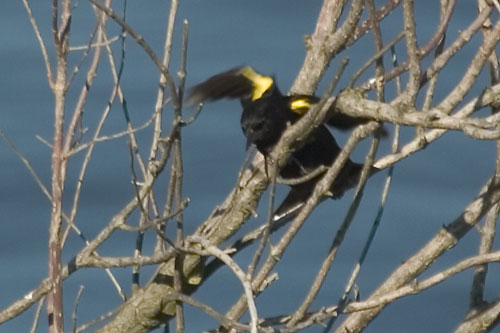|
| Query: Passeriformes | Result: 1262nd of 1418 | |
Yellow-winged Blackbird (Agelasticus thilius) - Wiki
| Subject: | Yellow-winged Blackbird (Agelasticus thilius) - Wiki
| |

| Resolution: 500x333
File Size: 40716 Bytes
Upload Date: 2007:12:03 17:28:48
|
Yellow-winged Blackbird
From Wikipedia, the free encyclopedia
Order: Passeriformes
Family: Icteridae
[Photo] Yellow-winged Blackbird (Agelasticus thilius, aka Agelaius thilius, Chrysomus thilius). Brazilian name: Sargento, Chilean name: Trile. Author: Arthur Grosset (www.arthurgrosset.com). Source: http://www.arthurgrosset.com/sabirds/yellow-wingedblackbird.html
The Yellow-winged Blackbird (Agelasticus thilius) is a species of bird in the Icteridae family. It is found in Argentina, Bolivia, Brazil, Chile, Paraguay, Peru, and Uruguay. Its natural habitats are swamps, intertidal marshes, and pastureland.
http://en.wikipedia.org/wiki/Yellow-winged_Blackbird
| The text in this page is based on the copyrighted Wikipedia article shown in above URL. It is used under the GNU Free Documentation License. You may redistribute it, verbatim or modified, providing that you comply with the terms of the GFDL. |
|
^o^
Animal Pictures Archive for smart phones
^o^
|
|